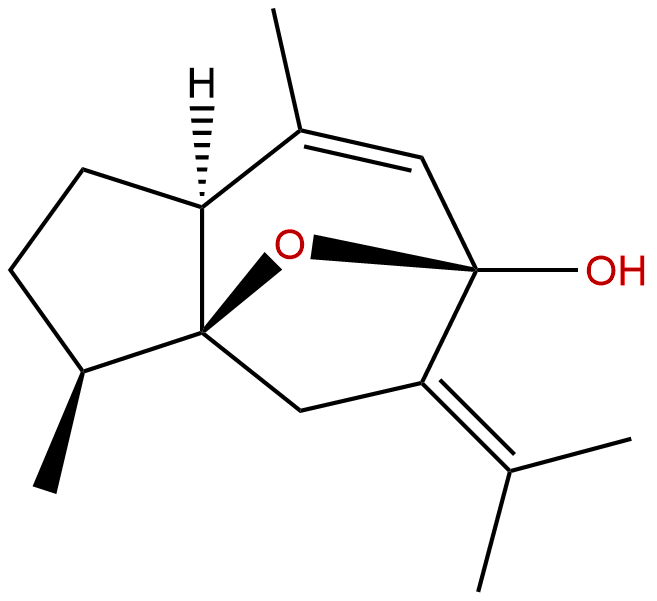
CurcumenolCAS No.:19431-84-6
|
||||||||||
 |
|
|
||||||||

| Catalogue No.: | BP0420 |
| Formula: | C15H22O2 |
| Mol Weight: | 234.339 |
Synonym name:
Catalogue No.: BP0420
Cas No.: 19431-84-6
Formula: C15H22O2
Mol Weight: 234.339
Botanical Source: Curcuma zedoaria (zedoary) and Curcuma longa (turmeric)
Purity: 95%~99%
Analysis Method: HPLC-DAD or/and HPLC-ELSD
Identification Method: Mass, NMR
Packing: Brown vial or HDPE plastic bottle
Can be supplied from milligrams to grams.
For Reference Standard and R&D, Not for Human Use Directly.
Inquire for bulk scale.
Description:
Curcumenol possesses a variety of health and medicinal values which includes neuroprotection, anti-inflammatory, anti-tumor and hepatoprotective activities. It inhibits NF-κB activation by suppressing the nuclear translocation of the NF-κB p65 subunit and blocking IκBα phosphorylation and degradation.
References:
Phytother Res. 2010 Aug;24(8):1213-6.
Inhibitory effects of curcumenol on human liver cytochrome P450 enzymes.
Curcumenol, one of the major components of Zedoary turmeric oil, has been widely used to treat cancer and inflammation. As an antibiotic or anticancer drug, Curcumenol is highly likely to be used in combination with various synthetic drugs in most cases, thus it is necessary to evaluate potential pharmacokinetic drug-drug interactions induced by Curcumenol.
METHODS AND RESULTS:
In this study, the inhibitory effects of Curcumenol on seven CYP isoforms were investigated, and the results demonstrated that only CYP3A4 was strongly inhibited (IC(50) = 12.6 +/- 1.3 microM). Kinetic analysis showed the inhibition type was competitive with K(i) value of 10.8 microM. Time- and NADPH-dependent inhibitions were also investigated to show Curcumenol is not a mechanism-based inhibitor. Employing these in vitro data and maximum plasma concentration of Curcumenol in human predicted from beagle dog's in vivo pharmacokinetic data, the change in AUC of victim drugs was predicted to be 0.4%, which suggested that Curcumenol may be safely used without inducing metabolic drug-drug interaction through P450 inhibition. Nevertheless, due to the limited pharmacokinetic data available for Curcumenol in humans, it is still not possible to evaluate its potential clinical effects on human patients from in vitro data.
CONCLUSIONS:
Thus, the magnitude of drug-drug interaction (DDI) induced by Curcumenol warrants further investigation.